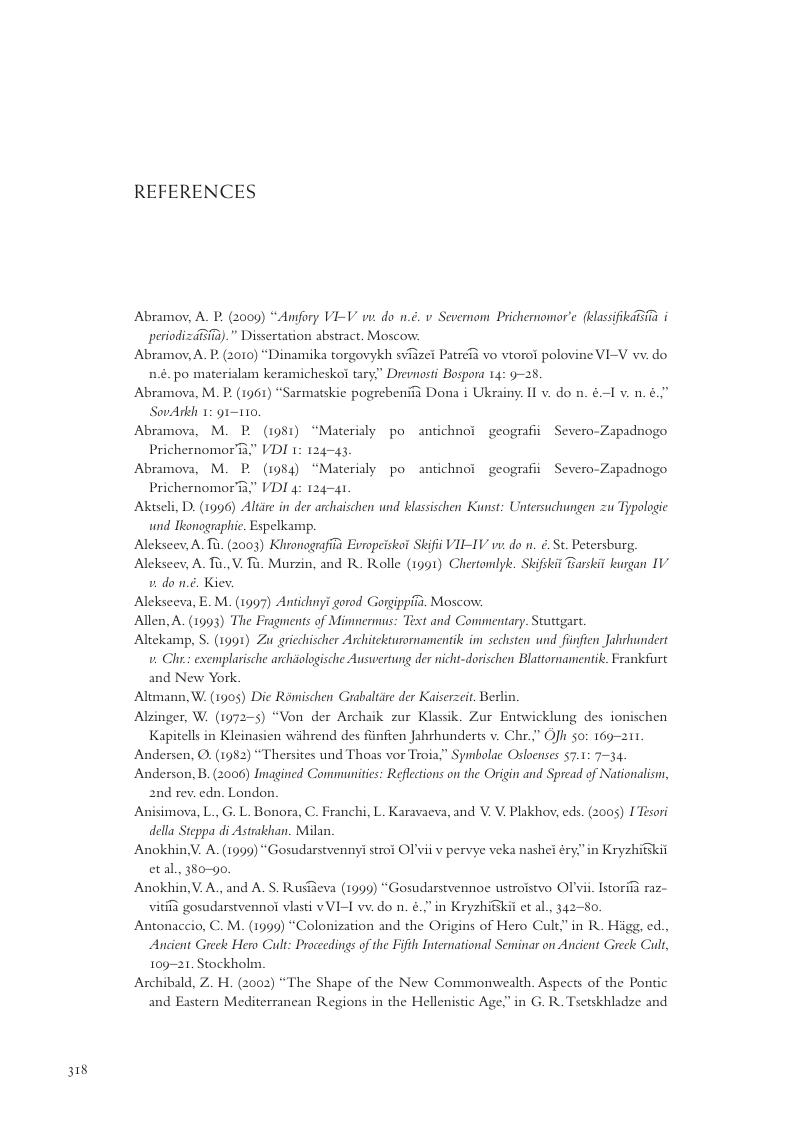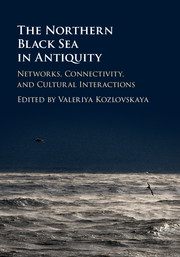Book contents
- The Northern Black Sea in Antiquity
- The Northern Black Sea in Antiquity
- Copyright page
- Dedication
- Contents
- Color Plates
- Figures
- Maps
- Contributors
- Preface
- Abbreviations
- Maps
- Introduction: “Pontic Networks”
- 1 The Greeks and the Black Sea: The Earliest Ideas about the Region and the Beginning of Colonization*
- Part I Harbors
- Part II Overseas Trade (Based on Amphora Studies)
- Part III Political Culture
- Part IV Art and Architecture
- Part V The Sarmatians
- Notes
- Bibliography
- Index
- References
Bibliography
Published online by Cambridge University Press: 30 August 2017
- The Northern Black Sea in Antiquity
- The Northern Black Sea in Antiquity
- Copyright page
- Dedication
- Contents
- Color Plates
- Figures
- Maps
- Contributors
- Preface
- Abbreviations
- Maps
- Introduction: “Pontic Networks”
- 1 The Greeks and the Black Sea: The Earliest Ideas about the Region and the Beginning of Colonization*
- Part I Harbors
- Part II Overseas Trade (Based on Amphora Studies)
- Part III Political Culture
- Part IV Art and Architecture
- Part V The Sarmatians
- Notes
- Bibliography
- Index
- References
Summary

- Type
- Chapter
- Information
- The Northern Black Sea in AntiquityNetworks, Connectivity, and Cultural Interactions, pp. 318 - 360Publisher: Cambridge University PressPrint publication year: 2017



